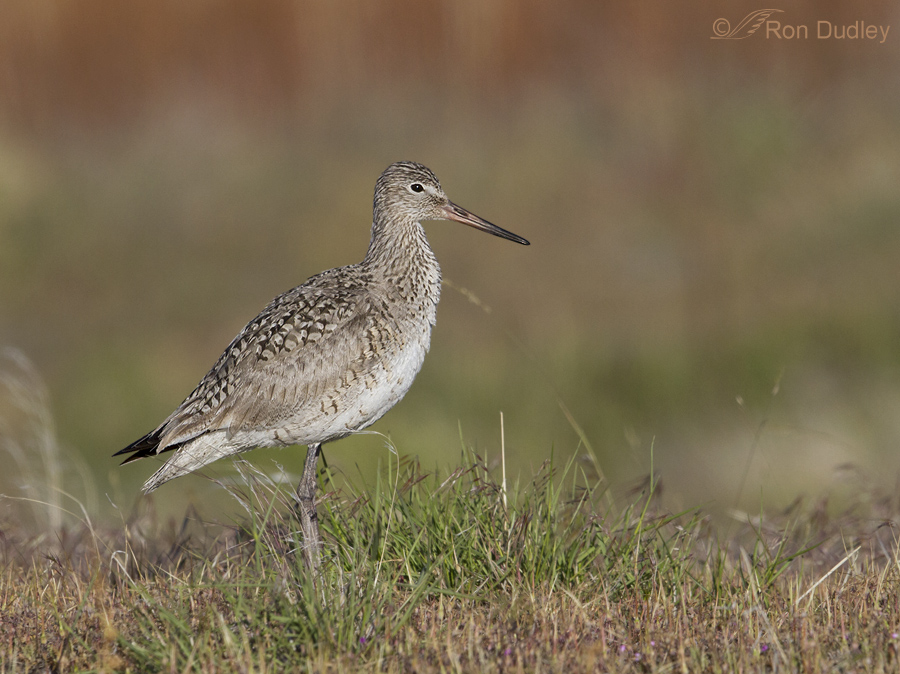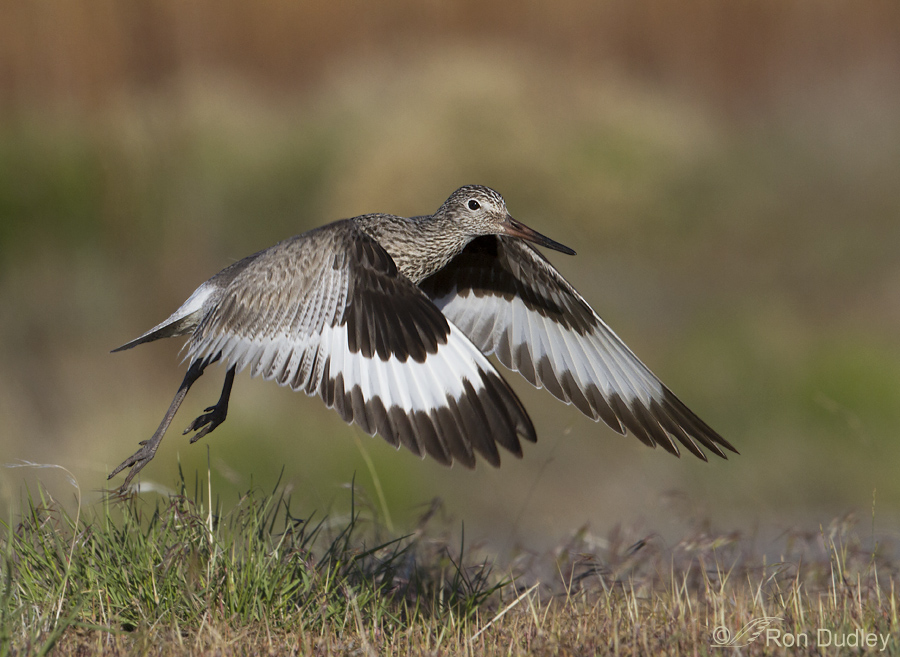With its wings folded the plump, drab-plumaged Willet is brown and inconspicuous but a remarkable transformation takes place when those wings are opened.

1/3200, f/6.3, ISO 500, Canon 7D, Canon EF500mm f/4L IS II USM, not baited, set up or called in
I photographed this Willet two days ago on Antelope Island. While I like this image, there’s not much remarkable about the bird and I have many photos of the species at rest so at this point I had removed my teleconverter and changed camera settings to give me plenty of room and shutter speed for possible take-off. I use this strategy with Willets as often as possible because if I can catch the wings in the up or down position (as opposed to mostly horizontal) I’m a huge fan of the strikingly bold black and white wing plumage patterns that are revealed in flight.
On this day I got lucky.

1/4000, f/6.3, ISO 500, Canon 7D, Canon EF500mm f/4L IS II USM, not baited, set up or called in
I caught the wings down and forward just as the bird lifted off. They have an unusually broad white wing-stripe bordered in black that runs across the primaries and secondaries and gives them distinctively flashing wing-beats. This flight posture combined with one of those spring Antelope Island backgrounds that I like so much made this image one of my recent favorites.
Every time I see this instantaneous transformation I think of the Willet as an avian chameleon.
Ron


As a binocular bird watcher using 7 – 8.5 magnification and no slowing of motion beyond human perception, what I find interesting is the pattern you show on their backs. I can’t see that. All I see is a rather plain and solid gray topside with a white belly and, if the light is right, black legs.
Usually they’re mucking about while hunting. I learned them through binoculars in Arizona where their legs are not covered in clay mud. In Wisconsin the dirt is black in many areas; so, the black legs are a bit of a guess when just looking at the top of the legs. The wing pattern and shape really clinch my ID for long legged yellow legs vs. willet in this area using 7 – 8.5 magnification.
They can changes from nondescript to bold and flashy in a wingbeat…amazing!
That’s one of the things I appreciate about them, Patty.
I’ve been watching willets for years, and have always loved the wing pattern. They are one bird for which butt shots can be spectacular. I’ve also discovered that sanderlings have a similar wing pattern.
Susan, I’ve never photographed a Sanderling. If I ever do I’ll definitely look for that pattern.
Ron, I hope you get to photograph them – they are great little birds, lots of fun to watch.
Wow!
At first I thought it was interesting how similar looking it is the the Greater Yellowlegs. Then- flash!! Not so much!
Great shot!
You’re right, Suze – they do resemble yellowlegs until they lift their wings. They don’t have yellow legs either, so that helps with ID.
Very interesting Ron. And like Dick said we will have to wait till someone come with the right answer,if there is any.
Thanks for sharing.
Thank you, Jorge.
holy smokes … right you are … who’d a thunk it!!!!! very cool!!!
Glad you like it, Lois. Thanks.
Coloration and how that coloration results in a birds behavior has always interested me. Even in the drab colors of the Willet, until it opens its wings, in my mind, has to have some evolutionary meaning even if it is nonexistent today. The interesting note to me is that with ALL the research that is done on birds, a few have a ton of info and many species have very little information on their behavior, the Willet being one. However, if one looks up the Willet in Bent’s Life Histories of North American Shore Birds, there is a ton of information about almost everything but the affect the black and white pattern on the wings has to mating behavior or any other behavior. Yet there is a note from 1916-17 on page 28-29 of the use of the black and white pattern by displaying the wings upright over the back in a form of mating ritual. Until an interested person wants to know, I guess we all will conjecture over what the function or past function was of the black and white pattern in the wings. As a teacher I spent 4 summers banding terns on an island that had a pair of Willet’s nesting and I noticed this over the back wing projection, very striking, but didn’t at the time see any connection. Sorry for the long note.
Excellent shots Ron, as usual and many thanks for sharing.
Dick, I’m sure you’re aware that Willits nearly always hold their wings up for a few seconds just after landing. Makes me wonder if they’re using those bold wing patterns to communicate something to other Willets.
Never apologize for your “long notes”. Without exception I find them interesting.
Delightful! I wonder how this transformation affects it in the wild – creating a startle response for an approaching animal?
I’m not sure, Alison but I suspect that color pattern has a practical purpose.
Fantastic shots! Thanks for sharing Ron!
Thanks, Charlotte.